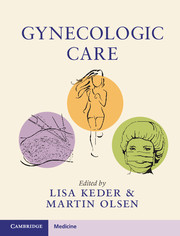Book contents
25 - Anal Incontinence
from Section 4 - Urogynecology and Pelvic Floor Dysfunction
Published online by Cambridge University Press: 01 February 2018
Summary
Introduction
Anal incontinence is defined as the involuntary loss of flatus, liquid or solid stool that is a social or hygienic problem. Fecal incontinence is defined as the involuntary loss of liquid or solid stool that is a social or hygienic problem. The symptoms cause great social distress and together are considered the second most common cause for nursing home placement, dementia being the first. See definitions in Box 25.1.
Box 25.1 Definitions
Fecal Incontinence: Involuntary loss of liquid or solid stool that is a social or hygienic problem.
Anal Incontinence: Involuntary loss of flatus, liquid, or solid stool that is a social or hygienic problem.
Seepage: Conscious leakage with activity or after bowel movement.
Passive: Leakage without awareness
Urge:Inability to actively defer a bowel movement.
Scope of the Problem
Anal incontinence affects between 1 and 10 percent of community dwelling adults, depending on the definition used; there is no difference between sex, and the incidence increases with advancing age. The prevalence rises up to 50 percent in nursing home residents. Because of the stigma associated with the symptom, many patients are too embarrassed or ashamed to mention their symptoms to providers, family, or friends. Active questioning about the symptoms is often necessary and best targeted to high-risk groups. In a survey of nursing home residents, the most common association was with urinary incontinence, and, conversely, the most common association of urinary incontinence was fecal incontinence. Loss of voluntary control of defecation imposes a heavy social and economic burden, as well as a significant impairment in quality of life. The economic cost of fecal incontinence has been estimated at $4110 per patient per annum (2010 US dollars).
High-risk groups for fecal incontinence are listed in Box 25.2.
Box 25.2 High-Risk Groups for Fecal Incontinence
Frail older people
Neurologic disorders or spinal disease, such as spina bifida, stroke, multiple sclerosis, Parkinson's disease
Severe cognitive impairment
Urinary incontinence
Pelvic organ prolapse or rectal prolapse
Colonic resection or anal surgery
Pelvic radiotherapy
Perianal soreness, itching, or pain
Learning disabilities
Anatomy and Physiology
The physiology of anal continence and defecation, not unlike micturition, is a complex process that involves both autonomous and voluntary controls.
- Type
- Chapter
- Information
- Gynecologic Care , pp. 248 - 254Publisher: Cambridge University PressPrint publication year: 2018



